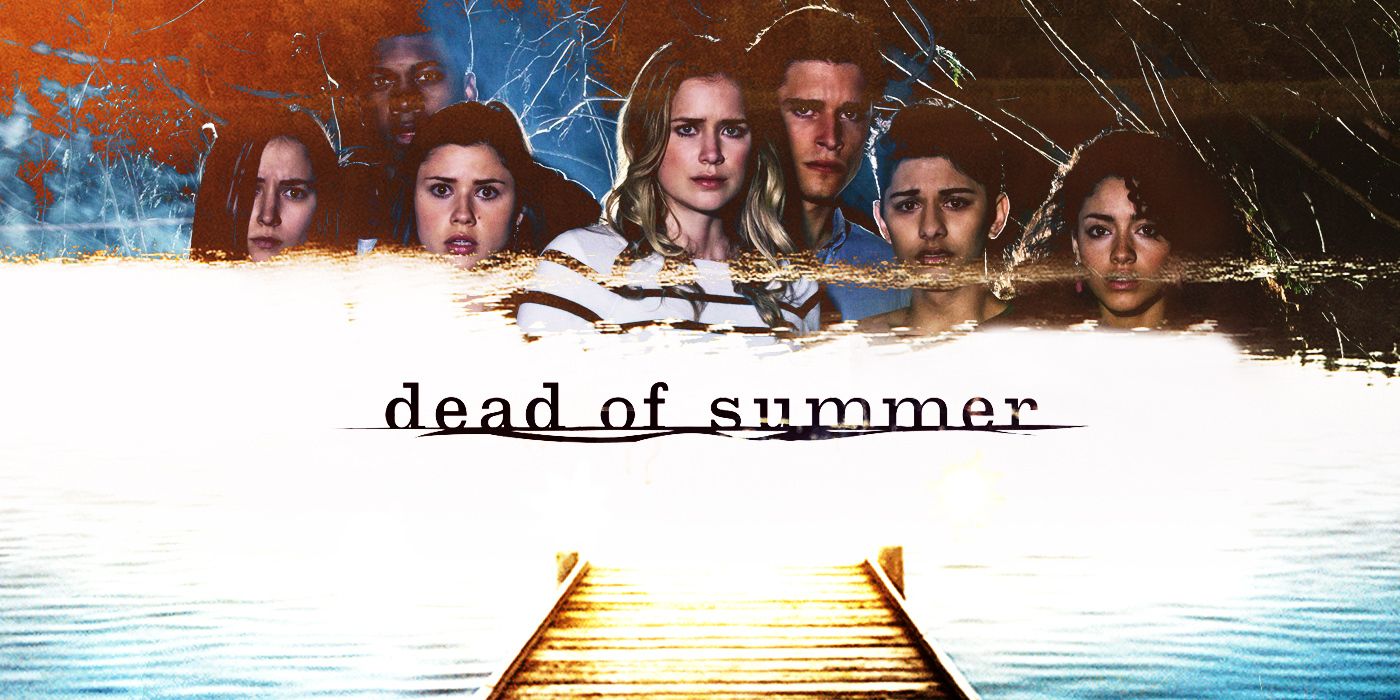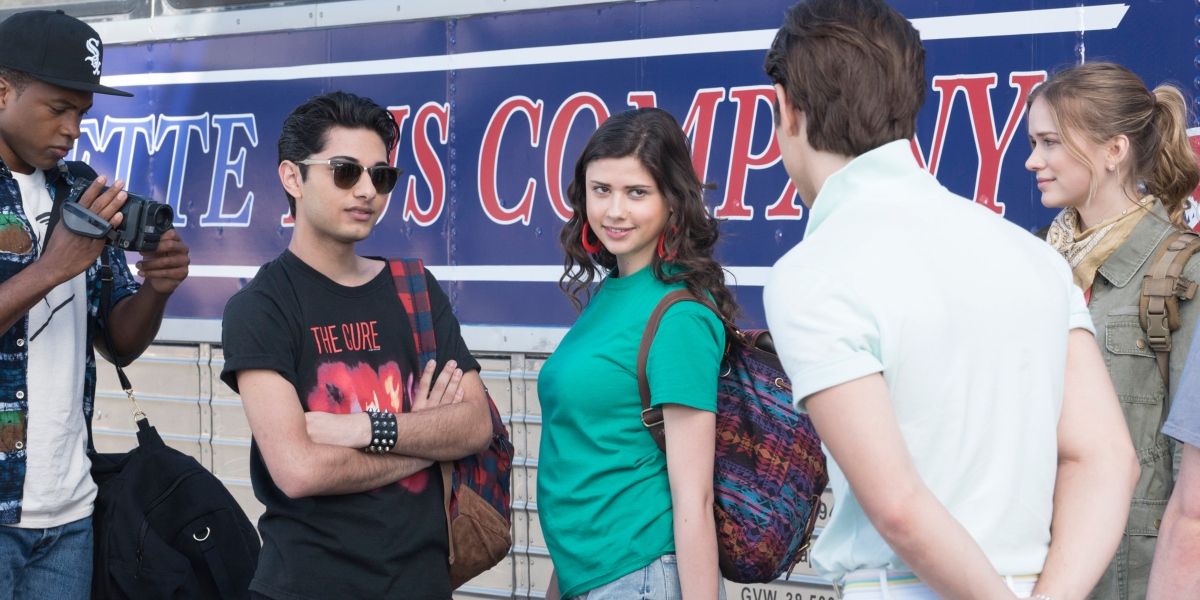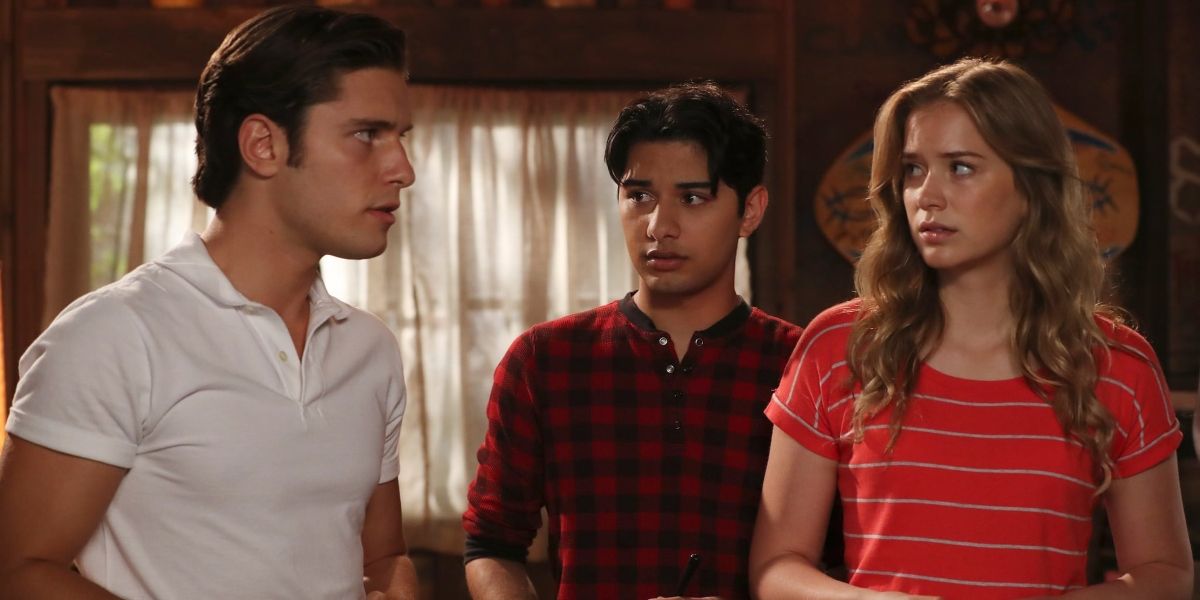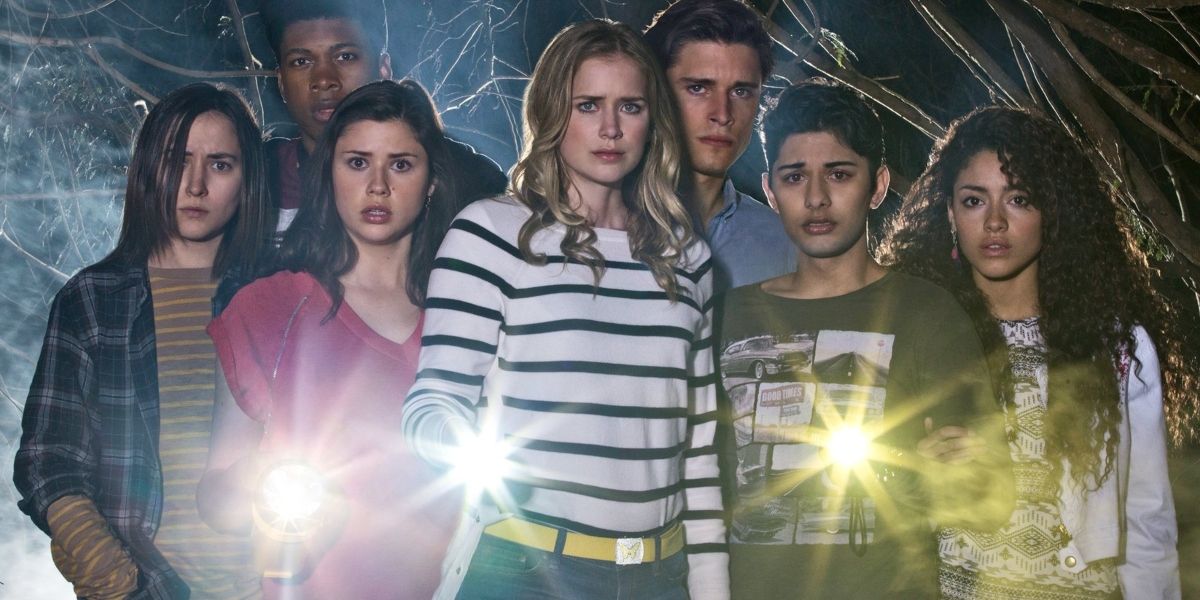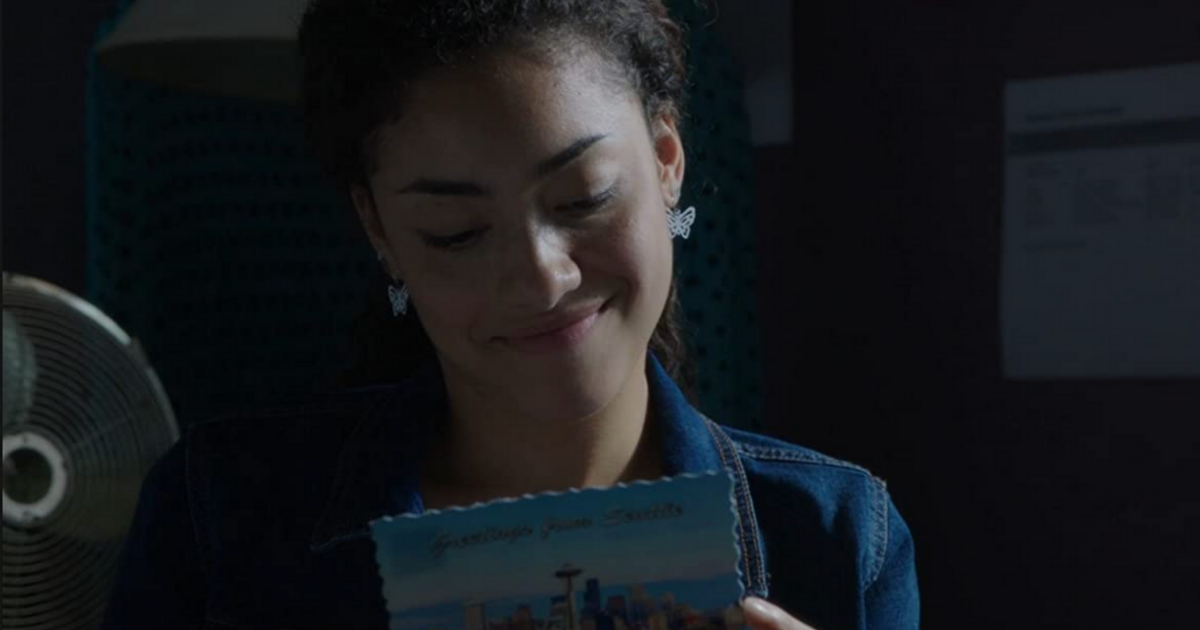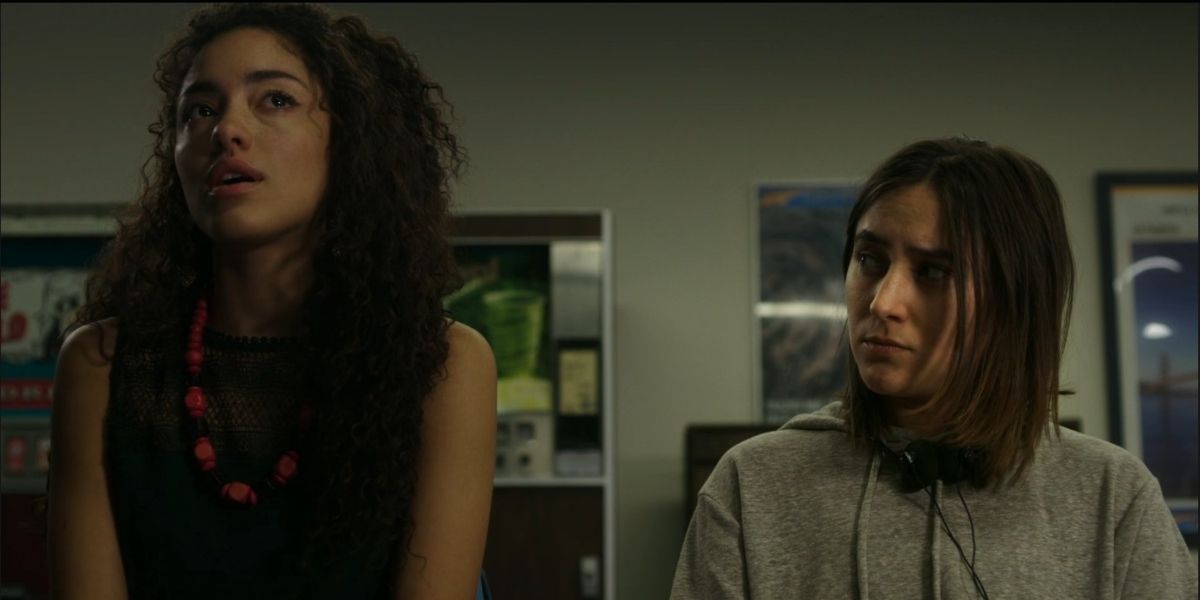Let's be honest; horror is a difficult genre to pull off on TV. While shows like American Horror Story and Creepshow have found success, horror programs often fail to scare or see their premises toned down to attract audiences. For every successful horror show, there is your average Castle Rock or Swamp Thing, shows rooted in the genre that never seemed to find their footing. The most common thread between successes is the anthology format, which appears to be the best way to present a compelling horror television show. Making your horror show an anthology is not a guarantee that it will succeed, however. This proved to be the case with Freeform's Dead of Summer, a 2016 anthology-to-be that was unceremoniously canceled after one season.
It is also one of the few Freeform shows not available to stream anywhere, not even on fellow subsidiaries Disney+ and Hulu. With the fifth anniversary of its premiere approaching on June 28, I want to plead my case that it should return to streaming.
Let me explain something really quick, though: Dead of Summer is not a good show. It was poorly-paced, had problematic casting that barely flew in 2016, and seemed to have an identity crisis about what it wanted to be. So, if I don't care for it, why am I gunning for it to receive a second chance? The answer is simple: It managed to be ahead of its time in several ways.
The show was set in 1989 and centered around the misfit counselors of Camp Stillwater. While it sounds like archetypal, run-of-the-mill horror schlock (and in many ways, it was), the show still took risks that few shows or movies have followed up on today regarding its casting. For starters, it is surprisingly inclusive when considering the mainly white casts of slashers the show was inspired by. The show's Black counselors, photographer Joel Goodson (Eli Goree four years before his critically lauded turn as Muhammed Ali in One Night in Miami...), and reforming mean girl Jessie Tyler (Paulina Singer) are given important storylines that flesh their characters out that steer away from becoming traumatic. Best friends Cricket Diaz (Amber Coney) and Blair Ramos (Mark Indelicato) are Latinx, with their heritages are essential to their characters but not defining them. A mid-season twist also revealed that the cocky rich boy Alex Powell (Ronen Rubenstein) was a Russian immigrant who experienced Cold War-fueled xenophobia in his youth. While initially seeming paper-thin, the show subverted expectations by having almost every main character have a backstory that gives them depth, motivation, and personality.
This new batch of counselors seems to be dead meat for any supernatural serial killer that crosses Camp Stillwater's path. When I previously said that the show had an identity crisis, the suspected killers are a significant part of this confusion. Perhaps most notably is that Stillwater's legendary Tall Man is played by none other than horror icon Tony Todd. Suspicions arise that, even though they don't have to say his name five times, the ghost has come to seek his revenge on the campers for...being on his land or something. Honestly, the Tall Man's motives are not that defined other than the fact that he's obviously a benevolent red herring. There is also an occult-worshipping biker gang around town, but their motives are just as poorly established.
The real villain behind the killings and mass hysteria is what arguably makes the show's tedious pacing worth it in the end. Throughout the show, the timid newcomer Amy Hughes (Elizabeth Lail) is positioned as the Final Girl overcoming the previous trauma of not saving her classmate dying. However, it is revealed that Amy killed her classmate and her entire family to appease the demon named Malphas (yeah, I don't know, either) stalking the campgrounds. It is a wild twist and also one that is quite genius. Subverting the Final Girl trope is not challenging, but the character supposed to take the mantle rarely ends up being the ultimate Big Bad. Lail also makes a much more convincing villain than a helpless victim; looking back, her best performances on the show were during the final episodes in which this twist was revealed.
Dead of Summer's Final Girl ends up being Jessie, who has a great character arc involving reconciling a former friendship and letting go of her past betrayals. She ends up defeating Malphas and kills a still-evil Amy after the exorcism. While Amy was seen as the usually timid and prude stereotype horror fans have seen before, Jessie actually went through the evolution of the Final Girl. Overcoming the troubles of her past, she learns how to stand up for herself and fight back against her attacker.
Black Final Girls are sadly few but highly memorable. Selena (Naomie Harris) in 28 Days Later, Jeryline (Jada Pinkett-Smith) in Demon Knight, and Zoey Davis (Taylor Russell) in Escape Room are examples of such intelligent and well-developed Black female characters that can survive the worst of circumstances. Despite originating from a television show of varying quality, Jessie deserves to be recognized among these characters. It is a shame that she hasn't, despite her terrific progression throughout the show. In the seminal horror essay "Her Body, Himself" by Carol J. Clover, the Final Girl is described, among other things, as "intelligent and resourceful in a pinch." The fact that Jessie was able to figure out Amy's ulterior motives and defeat her before anyone else is proof of this.
She might not be androgynous in the way that Nancy Thompson was, nor was she apprehensive about romantic and sexual affections like Laurie Strode. In fact, a significant part of her storyline involved her rekindling a relationship with her old flame Garrett Sykes (Alberto Frezza). However, Jessie still manages to both fulfill and reinvent what a Final Girl can be. Having the initial mean girl character take down the shields she had developed for years to defeat the purest evil is empowering in a way, especially when you consider the period. Despite outlier feminist slashers such as The Slumber Party Massacre, many horror films wouldn't even bother expanding upon the supposed mean girl's intentions or feelings. She would just be killed off mercilessly for allegedly being everything a young girl shouldn't. Having Jessie survive to the end, but being the one who ends the reign of terror is proof that there is no one true way to be a Final Girl.
Now that we're discussing subverting stereotypes, we should probably talk about the elephant in the room in the form of counselor Drew Reeves. Dead of Summer was a show that built itself on every character having secrets, but his was an absolute doozy in both idea and execution. At the end of the pilot episode regarding Drew, the big reveal was that he was a transgender man, even though you probably could guess that given that cisgender actress Zelda Williams was listed in the opening credits. This casting decision raised eyebrows in 2016, and it absolutely would not fly today in 2021.
The placement of this twist to be at the end of the pilot seems particularly strange in retrospect. In Logan-Ashley Kisner's essay "A Timeline of Transgender Horror," he posits that "gender is nearly always the twist, the last-minute shocker meant to solidify the film [in Dead of Summer's case, pilot episode] in your mind." While this quote referred to films, it still applies to how the audience finds out that Drew is trans when he takes off his shirt in the bathroom. It is not so much the inclusion of the reveal that is off-putting, but rather its framing. Why exactly did the scene have to start with a long, isolating walk to the cabin bathrooms, followed by a tedious sequence of Drew undressing? The scene's framing suggests that it is supposed to be a big shocking reveal that changes the entire story, but what exactly was the point of it being such an invasive and careless reveal? It wasn't as if the character was given any other traits besides being a David Bowie fan and transgender. If anything, Drew was possibly the worst developed and written character in the entire show.
Props do have to be reluctantly given to Dead of Summer, however, for having Drew and Blair's blossoming romance be a central focus of the show. Seeing LGBTQ relationships in horror media is already scarce enough, but having a gay relationship involving a trans man is even rarer. It just sucks that Drew is a poorly developed character and Blair is kind of a douchebag. Despite this, there are genuinely cute moments between the two that work because of Indelicato and Williams' chemistry. This chemistry is what ultimately saves the relationship in the story from being complete trans trauma porn.
The two young lovers also survive the Camp Stillwater ordeal, becoming two of the few LGBTQ+ survivors in horror films. The treatment of characters that are not white, straight, and cis-gendered has been lampooned in such media as the Scary Movie franchise and, most recently, Freaky. Had this been a more hateful and by-the-numbers show, this would not have happened. Having characters who would've died a horrible death be the sole survivors is still rarely touched upon in horror properties five years after the show's run. The final episode's happy montage might seem corny, but if any of the counselors deserved to survive the summer the most, it would be them.
During its airing, Dead of Summer was available to stream on both Hulu and the Freeform app. Shortly after its cancellation, however, it disappeared. I can't imagine it had to do with the show's quality, given Freeform's heavily fluctuating content. My best guess for the quiet removal is the fact that it underperformed in the ratings. Given how two other seasons were already planned before the cancelation, it wouldn't be a surprise if Freeform decided to forget about the show.
Honestly, Freeform and Disney should maybe give it another chance after five years away. The basic idea of a whodunnit slasher where you do not precisely know if the killer is even human or not something familiar yet different in today's horror climate. Few shows have been this ambitious to a fault since its premiere and cancelation; besides, where else will you get to question whether a biker gang, an urban legend, a good girl gone bad, or an awakened demon is behind mysterious killings? Although the final product wasn't the greatest, there still is promise in this homage to the genre. Make it a Hulu original, ramp up the gore, improve the inclusivity and representations of your cast, and you might find yourself with a hit. The show was so close to greatness and yet wasn't able to succeed.
Suppose you don't want to do that; at least put Dead of Summer back on Hulu or even Disney+. The show took character and story risks that the vast majority of mainstream horror still is too afraid to incorporate. Instead of hiding it, why not embrace the fact that a show you aired five years ago set a standard that is still not being met? At the very least, please do it for me, who religiously watched every episode multiple times and failed to convince everyone I knew to watch it.
If you're in any way curious about Dead of Summer, Freeform did release the first episode in its entirety on YouTube. Check it out below:

